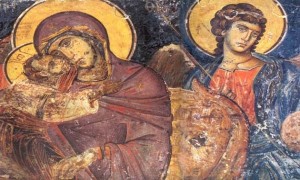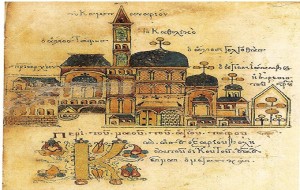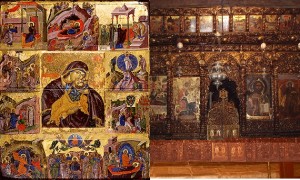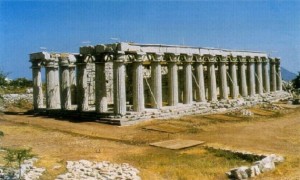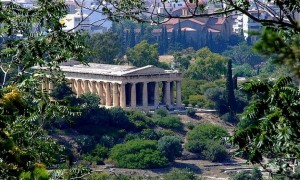Musical Manuscripts of Mt Athos & their Importance in Modern Research
11 July 2017Byzantine and post-Byzantine Musical Manuscripts of Mount Athos and their Importance in Modern Research*
The year is 1907 and the place is Mount Athos. A young man of not more then twenty-five years of age named Henry Julius Wetenhall Tillyard visits the Holy Mountain for the first time. The purpose and interest of his visit is the study of the musical manuscripts of Mt. Athos in his quest to decipher the earlier phases of Byzantine music1.
With this visit of Tillyard to Mt. Athos the modem phase of musicological study of Byzantine music is born. To appreciate the significance of this event even more, let us mention that today, with our modem means of transportation, the tlip from the city of Thessalonike to Mt. Athos, is a journey of two-to-three hours of travel by road to the towns nearest to Mt. Athos, Ouranoupolis or Hielissos. This is followed by a two-to-three hour boat lide to reach the particular monastery that one plans to visit. I will let you imagine how long it would have taken Tillyard to reach Mt. Athos in those days.
Tillyard’s early interest in the study of these musical manuscripts soon attracted the attention of many other scholars and helped to elevate this neglected field of study to the status of scholastic endeavour. After the first fruits of Tillyard’s research, such as his work on “The Acclamations of Emperors in Byzantine Ritual”, in the Annual of the British School at Athens (1912), other western scholars such as Carsten Hoeg and Egon Wellesz started work in this field of study. In Greece, interest in such detailed study of Byzantine music started around the same time, with Konstantinos Psachos and Simon Karas.2
* Published in Byzantine Macedonia: Art, Architecture, Music and Hagiography, Papers from the Melbourne Conference, July 1995, edited by JOM Burke and Roger Scott, National Centre for Hellenic Studies and Research, La Trobe University (Melbourne 2001) 107-111.
1Cf. Egon Wellesz “H.J.W. Tillyard -In memorium”, Studies in Eastern Chant (SEC) II (Oxford 1971) 1-4.
2 For a more detailed picture see Antonios E. Alygizakis, Θέματα εκκλησιαστικής μουσικής (Ecclesiastical Music Issues); (Thessalonike 1978) 107-117.
Source: Παναγιώτης Χ. Παναγιωτίδης, Θέματα ψαλτικής: μελέτες στην Εκκλησιαστική μουσική, Επέκταση: Κατερίνη 2003. σσ. 15-20 [Panagiotides Panagiotis, Chanting Issues; Studies on Ecclesiastical Music, Epektasis, Katerini, pp. 15-20].








